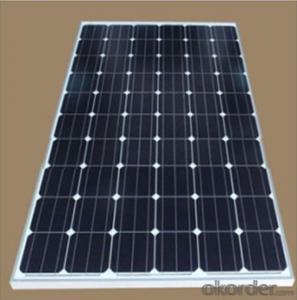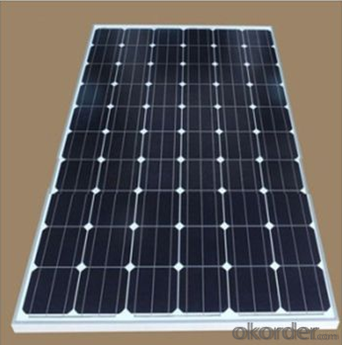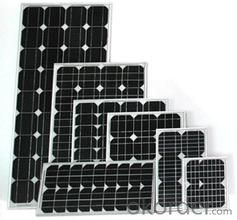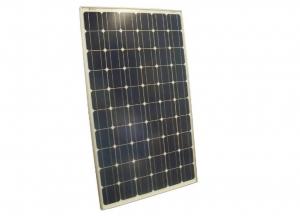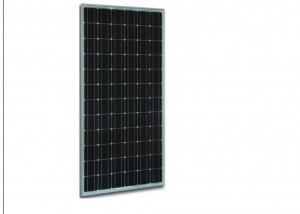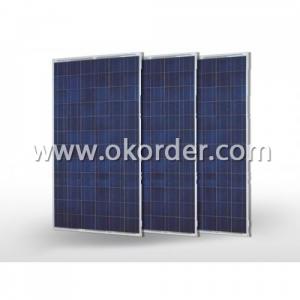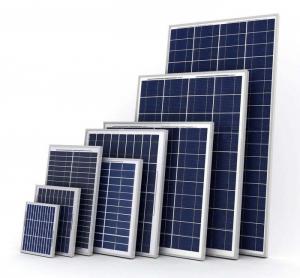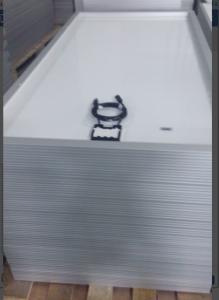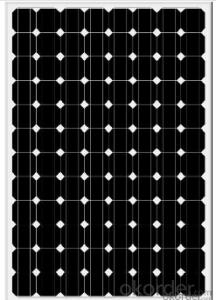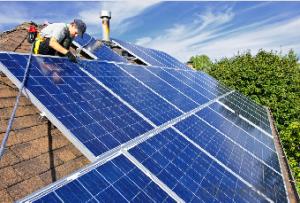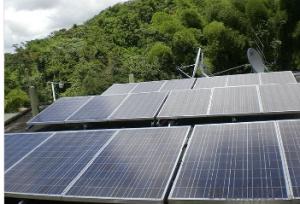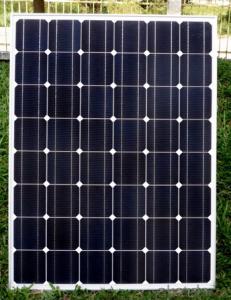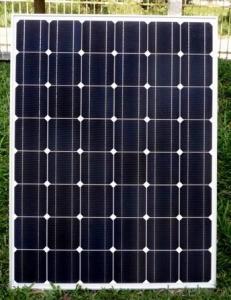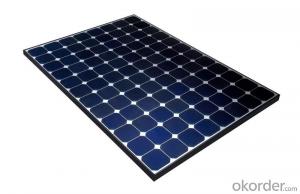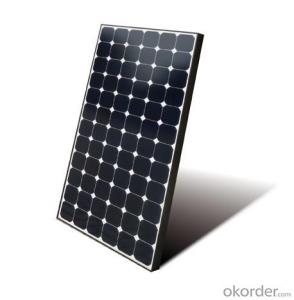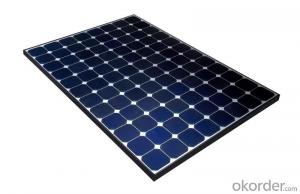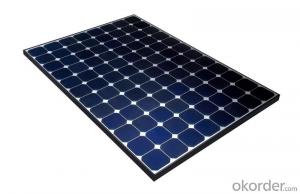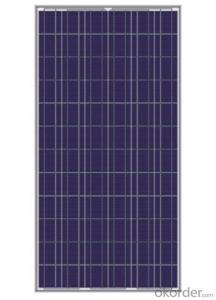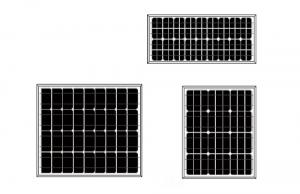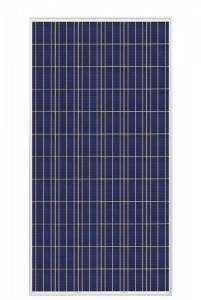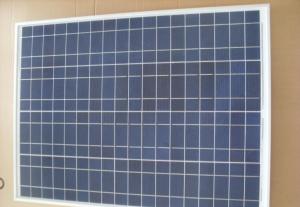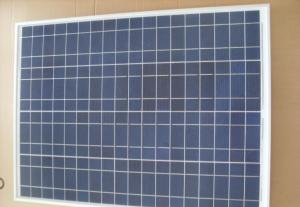Freedom Forever Solar Panels - CNBM Poly 155W Solar Panel with TUV UL CE Certificate for Residential
- Loading Port:
- China main port
- Payment Terms:
- TT OR LC
- Min Order Qty:
- 100 watt
- Supply Capability:
- 1000 watt/month
OKorder Service Pledge
OKorder Financial Service
You Might Also Like
Specification
CNBM Poly 150W Solar Panel with TUV UL CE Certificate For Residential
Introduction
This is a kit using for factory and storage field. This product is a higher output version with stable power and we guarantee you for 20years.
A photovoltaic (in short PV) module is a packaged, connected assembly of typically 6×10 solar cells. Solar Photovoltaic panels constitute the solar array of a photovoltaic system that generates and supplies solar electricity in commercial and residential applications. Each module is rated by its DC output power under standard test conditions, and typically ranges from 100 to 365 watts. The efficiency of a module determines the area of a module given the same rated output – an 8% efficient 230 watt module will have twice the area of a 16% efficient 230 watt module. There are a few solar panels available that are exceeding 19% efficiency. A single solar module can produce only a limited amount of power; most installations contain multiple modules. A photovoltaic system typically includes a panel or an array of solar modules, a solar inverter, and sometimes a battery and/or solar tracker and interconnection wiring.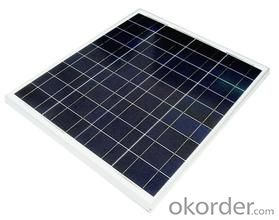
Suggested application
Home lighting business lighting,
Garden lighting, pavement lighting
Farmer household lighting
Decorative water pump
Traffic signal lighting
Industry area
Business area
Solar Power Plant
Product feature
Modules are made of Monocrystalline or Polycrystalline Silicon cell.
Materials and color of the solar panel frame: Clear anodized aluminum alloy type 6063T5 Universal frame; Silver-white color;
The output connection gathers the coupling: Selects conforms to the IEC-612615; 2005, class II, IEC61730 international standard; Airtight waterproofing binding clamp;
Module seal structure: The surface is thick, the high diaphanous rate armored glass with solar cell board special-purpose 3.2mm becomes after the high temperature lamination craft. The back selects has waterproof and anti- aged performance fine TPT materials. The entire block battery board has, the waterproofing, the anti- aging airtight and so on the fine performance;
Power tolerance: +/-3%
Packaging
International standard cartons (according to the requirements of customers)
- Q: My mom's house has some solar power panels on the top of her house but they are not connected to anything. They don't even have wires or anything like that. Does anyone know how to connect and make solar panels work? Thank You
- I do not know, but there is a house in Lafayette which was built with solar power. It was to have a solar system, so the contractor's first act was to put up a solar array on the property. It had battery backup, and was used to provide the electrical power during construction. during completion of the house the solar system was installed on the roof of the house.
- Q: I mean like bread is made of wheat, what are solar panels made up of?How are they manufactured?
- Solar panels (aka photovoltaic panel) are most often made up of thin wafers of crystalline silicon or cadmium telluride. As photons from the sun enter the photovoltaic cell, electrons are freed from the substrate when are then collected by wires that run throughout the panel. And as we know electrons=electricity!
- Q: I have an inverter and a battery 20 Amperes.Daily sun shine approx. 7 Hours.Do I need to buy anything or should I connect the solar panel to the Battery direct?
- No, don't connect the panel directly to the battery. You need to isolate the solar panel charging output from the AC-powered charger. A couple of high-current diodes arranged with their anodes connected to the charging sources in the positive supply line will allow either the charger or the solar panel to lift the voltage high enough to charge the battery, albeit with about 0.6 volts dropped across the diode. Both cathode ends would be connected to the battery. This arrangement allows a positive current to flow from either or both charging sources at the same time, although in practice, one will generally be higher than the other. Also, if the AC charger's voltage is significantly higher than the solar panel, the charger may always charge the battery. You would need to regulate its output to be slightly lower than the solar panel when it's near it's minimum useful operating voltage. (note that the 0.6 forward bias voltage on the diode might prevent the solar panel from completely charging the battery if it has any voltage regulation on its output)
- Q: Can solar panels be installed on disaster relief shelters?
- Yes, solar panels can be installed on disaster relief shelters. They provide a reliable and sustainable source of energy, allowing these shelters to have electricity for lighting, charging devices, and powering essential equipment, even in remote or disaster-stricken areas. Solar panels can greatly enhance the functionality and efficiency of disaster relief shelters, contributing to the overall effectiveness of relief efforts.
- Q: I have four power packs for solar lights. They have 3 AA .2volt batteries of 2450 mAh capacity installed in series for a total supply voltage of 4 volt maximum for the lights. I want to charge all four packs at once off a single 6 volt solar panel. With the four packs wired in parallel, what capacity output (wattage) panel do I need to charge the batteries in an 8 hour day?
- 3 cells in series makes a 3.6volt 2.4AH battery. You multiply the volts but not the capacity. In parallel would be .2volts, triple capacity. So 4 packs in parallel is 9.8AH. Rule of thumb for charging a flat battery is divide capacity by 0 for amps and charge for 5 hours. amp at 6 volts is doable, that would be 6 watts People who make batteries and solar cells usually over-rate them so I doubt that a solar panel of less than 20 watts rating will fully charge these batteries if they are flat. I'd google to see how you might control the charge current with a simple circuit.
- Q: I really need to know about the good companies who are selling good quality home solar panels.I lives in Pakistan, solar panels sell here are cheap but they doesn't work for long time, mostly they are quot;made in chinaquot;.Consumption of units of our house written on our electricity bill is 300.My dad is seriously thinking of purchasing a solar energy system for house that long last and works efficiently.So plz help me out.
- Are you looking for the best and Affordable Solar Panels? Find and compare brands of Solar Panels for home power systems. Contact us today for more details.
- Q: Need solar panel info with dimensions and also the total cost of the whole equipment for setting up of the required solar panels for a 2-story home
- Please excuse my bluntness, but you are not ready to ask these questions. This is a very complex issue. The how many question depends on what you expect of the system. Are you attempting to be off the grid? If so the system will have to supply all of your electrical needs, including those at night. You would need batteries. If you will be on the grid and want to supply all your electrical needs, your system will have to average the total daily usage. This will vary from one season to the next, so you will need to find out your annual usage. If you just want to reduce your electric bill, you need to pick the acceptable installation cost, and work with it to determine what it will buy In your shoes I would do some studying. Check out solar panels in the green search box above, and on the Internet. This will help you ask questions that are easier for us to answer.
- Q: So I'm trying to figure out what to ask for my birthday because its one of the few times I can get stuff for no reason, like stuff I don't normally go to the store to buy. (i dont go to the store to get much at all anyway).Anyway, I'm interested in solar panels and led and electronics and i was wondering if there is anything not over expensive that would be cool. Some things I'm interested in:solar, wind, water energyGadgets (multitools, swiss army knives)Vibram fivefingersdrawingmaking stuff (duct tape wallets, stuff out of altoids containers)basically technology and outdoors-gear stuffoh and im 6 turnin 7 male.
- solar panel is expensive, but small solar panel is not expensive, for example, 5w solar panel, solar light also not expensive led light also not expensive. i am not sure about other stuff that you said
- Q: i was reading the popular science magazine and i saw that they might make a Sun Powered it Absolutely NOT possible to make a car with a Solar Panel? I dont see any harm in making it..
- How would a car with Solar Panels work in a city like London, Seattle, or Dublin, where it is cloudy and rainy more often than not? Unless there is a way to store up the solar power, I don't see it working very well.
- Q: does anybudy know about solar panels? plz reply me
- Solar Panels are groups of Solar Modules mounted together. A solar cell is one cell. A solar module is a group of cells mounted in to a sheet A solar panel is a group of solar modules connected together on a rack and normally placed on the roof etc.. as a unit and can be called a solar array. A solar array is a group of solar modules or solar panels all mounted and wired together to form a single unit. Like a battery bank is a bunch of batteries hooked together and the batteries are made of cells. Was that what you wanted to know?
Send your message to us
Freedom Forever Solar Panels - CNBM Poly 155W Solar Panel with TUV UL CE Certificate for Residential
- Loading Port:
- China main port
- Payment Terms:
- TT OR LC
- Min Order Qty:
- 100 watt
- Supply Capability:
- 1000 watt/month
OKorder Service Pledge
OKorder Financial Service
Similar products
Hot products
Hot Searches
Related keywords
